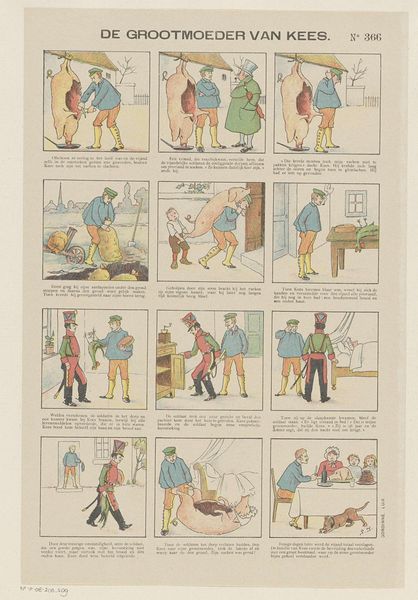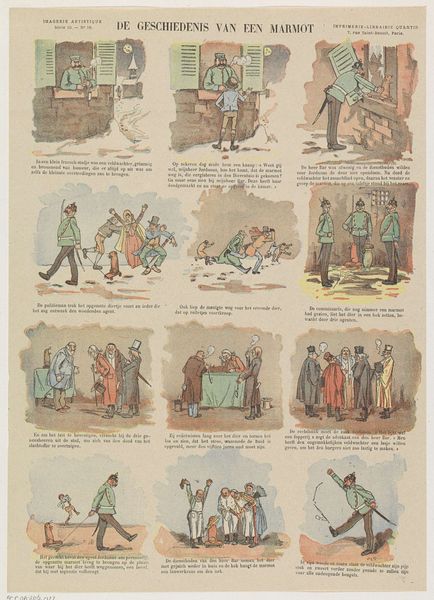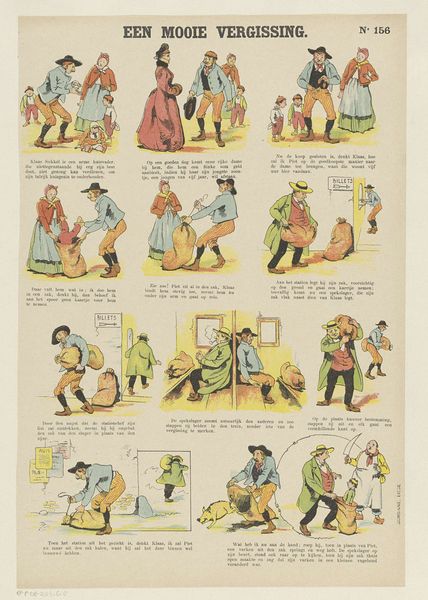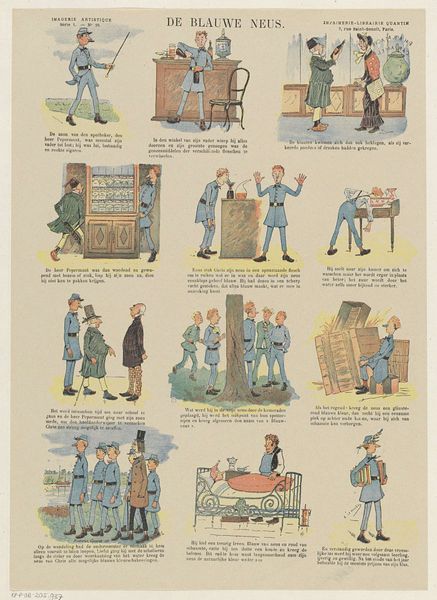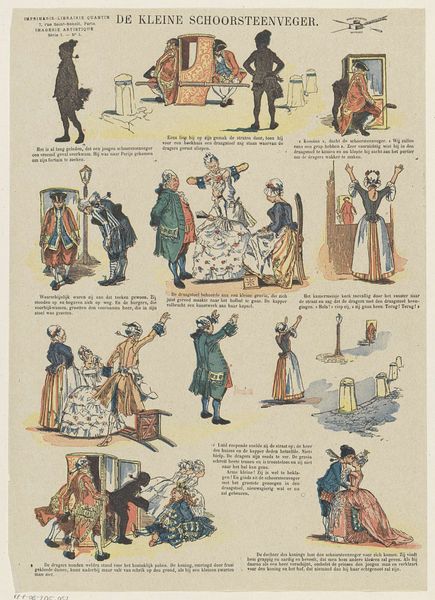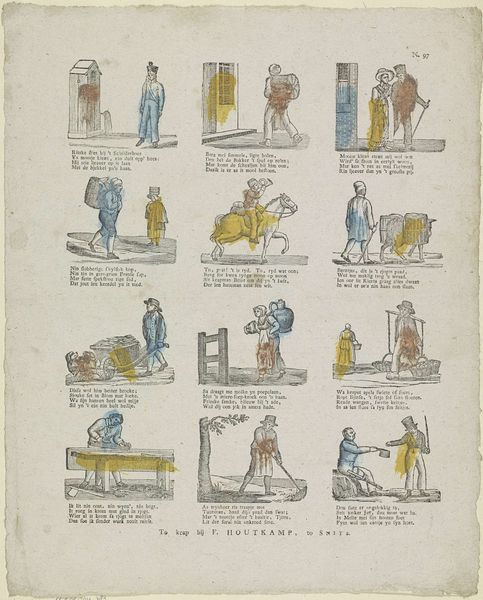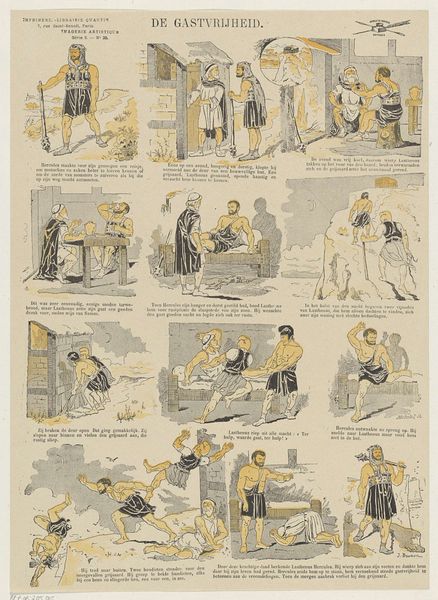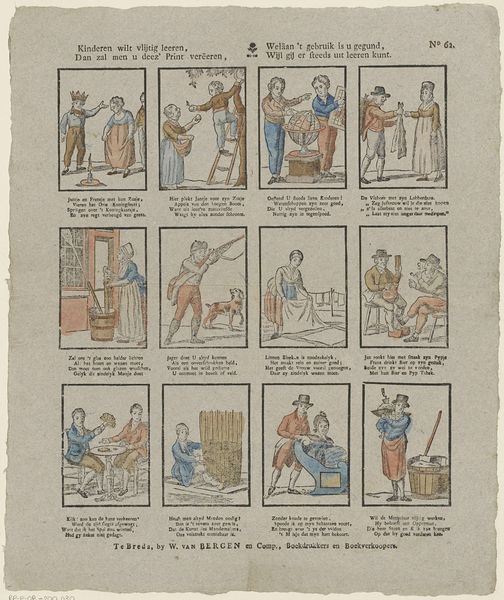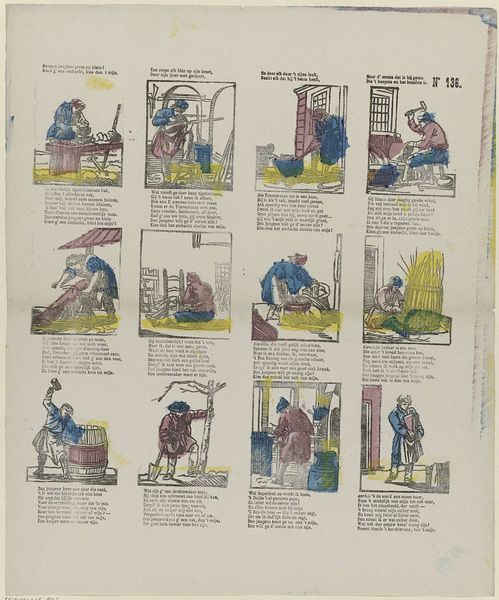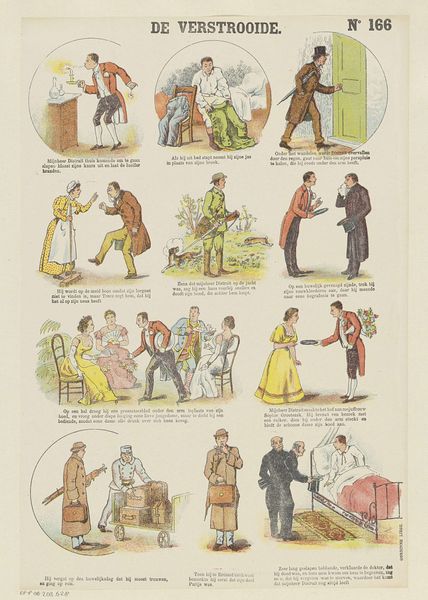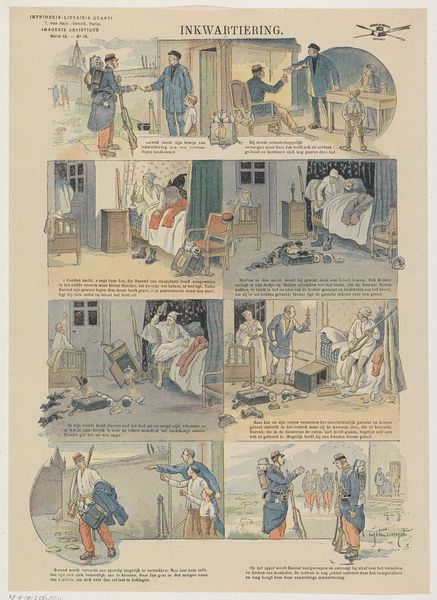
graphic-art, print
#
child-oriented illustration
#
graphic-art
#
comic strip sketch
#
narrative-art
# print
#
watercolour illustration
#
genre-painting
#
cartoon carciture
Dimensions: height 368 mm, width 265 mm
Copyright: Rijks Museum: Open Domain
Curator: Ah, here we have "De eieren van baas Slim," or "The Eggs of Boss Slim," created between 1876 and 1890, attributed to Albert Quantin. This is a charming example of graphic art, incorporating watercolour illustration and print techniques. Editor: My first impression is a light-hearted narrative, despite what seems like a rather disastrous outcome with all the broken eggs. There's a certain energy in the composition, especially with the sequential panels. Curator: Precisely! This artwork employs the style of a comic strip sketch, suggesting a clear narrative sequence and appealing to a broad audience, perhaps children in particular, which speaks to Quantin's approach to integrating humour into social commentary. What do you observe? Editor: Formally, the work employs a limited color palette – predominantly blues, browns and muted pinks–contributing to a subdued atmosphere, but the dynamism comes from the figures' poses. Notice the exaggerated gestures and elongated limbs; a classic example of cartoon caricature, effectively conveying the narrative. Curator: Exactly! And I find it quite striking how this piece engages with the themes of class and labor in a seemingly simple format. The 'Boss Slim' character, we can assume, is someone of status exploiting those underneath him, as portrayed in these individual tableaus. The cascading chaos of the broken eggs could then be interpreted as the unraveling of authority, as the exploiter meets his comuppance. Editor: The artist certainly uses visual economy to great effect! With minimal detail, they convey a lot. Look how effectively lines and color are used to create depth, with particular focus on contrasting textures, such as the roundness of the eggs against the rough rendering of Boss Slim’s coat. The narrative structure serves the formal arrangement, doesn’t it? Curator: Undoubtedly. And I think viewing this as a form of genre-painting is apt—capturing slices of everyday life and perhaps even mocking societal structures under the guise of mere light entertainment. It also challenges what we consider as children's media today versus at the time, since the humor could have different intended cultural significances. Editor: Indeed. On closer viewing, the composition effectively leads the viewer’s eye across the grid format. I find this sequential narrative particularly effective in displaying an unfolding comedic tragedy, if you will, using fundamental graphic art techniques. Curator: Absolutely. Examining this work truly gives us a new understanding of narrative-art through the lens of class struggle and subtle yet strong socio-political commentary. Editor: Yes, its structure offers a delightful encapsulation of humour through graphic precision!
Comments
No comments
Be the first to comment and join the conversation on the ultimate creative platform.

